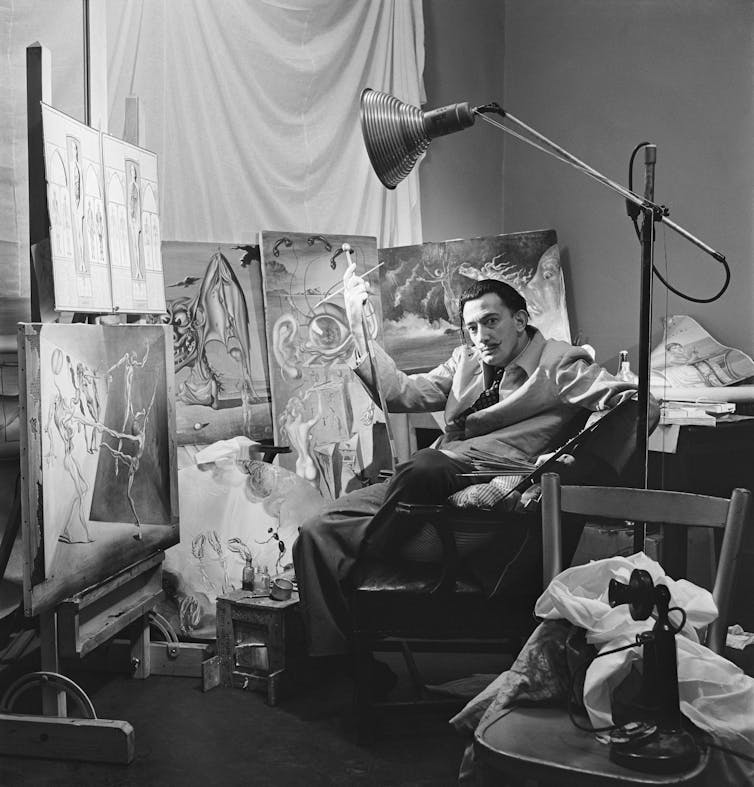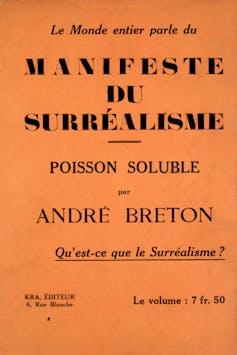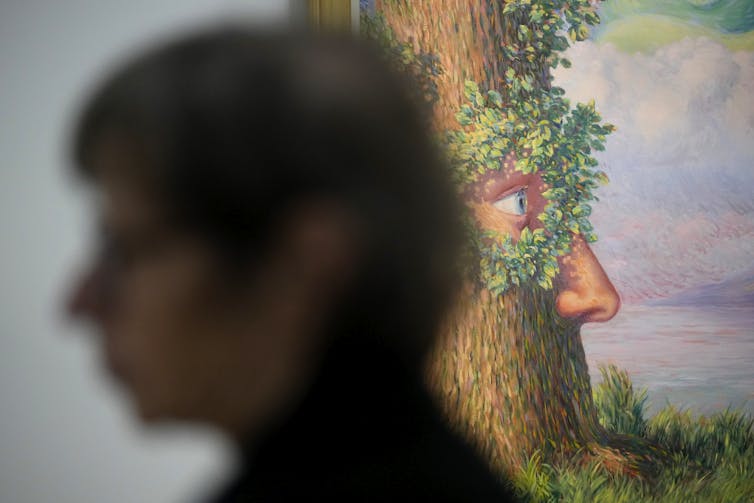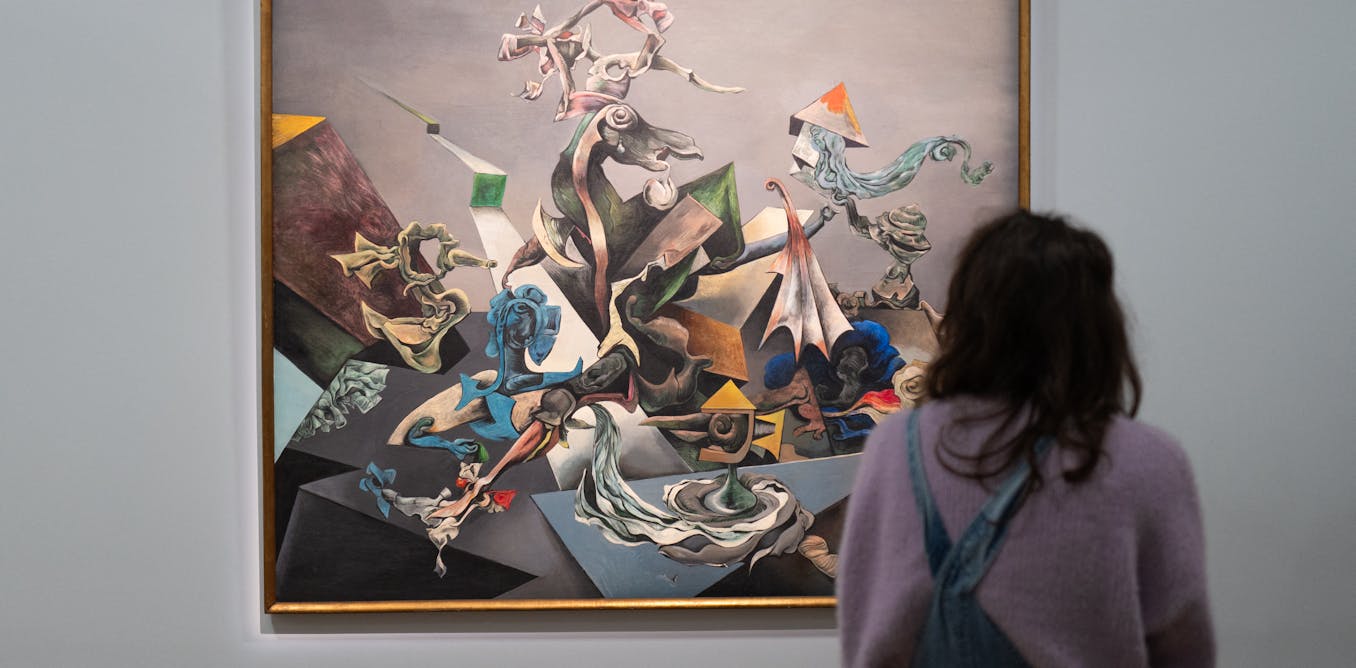A large-scale exhibition of surrealism that first opened in Paris in 2024 will have its sole American iteration, “Dreamworld: Surrealism at 100,” at the Philadelphia Art Museum from Nov. 8, 2025, through Feb. 16, 2026.
In everyday speech, people use “surreal” to refer to anything unbelievable, fantastic, bizarre.
“I found myself in the surreal position of explaining who I am …”
“In the middle of the story, things turned surreal.”
“It was a completely surreal situation!”
As an art historian and critic who has closely studied 20th-century avant-garde movements, I find it remarkable that a word that originated in the arcane jargon of Paris’ modern art circles a century ago has become so familiar. From the cafes and studios of the 1920s, the term has traveled into common parlance – touching a shared nerve for the strangeness and absurdity of modern life.
But surrealism, the movement that coined the term and took it up as its moniker, was about more than ostentatious strangeness. If you think only of Salvador Dalí’s limp watches swarming with ants, or his extravagant moustaches and even more extravagant (mis)behavior, you are missing the better part of what continues to make surrealism one of the most compelling art movements of the 20th century – and the lessons it still holds today.

Surrealist artist Salvador Dalí poses with his oil paintings at his New York City studio in 1943.
Michael Ochs Archives via Getty Images
Melding dream and reality
Surrealism was founded by a group of young Parisian artists, mostly writers, who gathered around the charismatic figure of poet André Breton.
During World War I, Breton had treated front-line soldiers suffering from what was then termed “shell shock” and today we understand as PTSD. This experience opened him to altered mental states and introduced him to new ideas from the Viennese psychoanalyst Sigmund Freud about the structure of the human mind.
In states of psychosis, but also in daily occurrences such as dreams and slips of the tongue, Freud saw glimpses of an uncharted region of the psyche, the unconscious. Why, Breton asked, shouldn’t life, and art, take these aspects of human experience into account? Shouldn’t the portion of existence spent dreaming also be recognized as having value?

The publication of André Breton’s ‘Manifesto of Surrealism’ in 1924 is considered the birth of the surrealist movement.
Photo12/Universal Images Group via Getty Images
In a manifesto published in 1924, Breton called for “the future resolution of these two states, dream and reality, which are seemingly so contradictory, into a kind of absolute reality, a surreality, if one may so speak.”
Politics of revolution
Freud had coined the term “dreamwork” to describe the activity that transformed residues of the day’s memories into vehicles for the expression of our unconscious desires.
For the surrealists, too, dreaming was no simple realm of idle fantasy. They understood the synthesis of sleeping and waking life as promising a liberation no less sweeping than that of the revolutionary workers’ movement of their time.
Overcoming the contradiction between dream and reality, they believed, would complement the class struggle between the global proletariat and its bourgeois oppressors. Surrealism was much more than a merely artistic project – it was also a means toward a larger political end.
From a century’s distance, these may appear grandiose, even delusional claims. But 1924, the year of surrealism’s founding, was only seven years after the Russian Revolution. The surrealists wagered on the power of both the revolution of modern art and poetry and the political transformation of society.
“‘Transform the world,’ Marx said; ‘change life,’ [French poet Arthur] Rimbaud said. These two watchwords are one for us,” Breton said, speaking to a group of writers in Paris. In other words, the uncompromising project of remaking social existence would not be complete without the artistic reimagining of the human psyche, and vice versa.
But by 1935, when Breton pronounced this succinct formulation, the surrealists’ gamble on revolution had already effectively been lost. With Joseph Stalin’s purges underway in Moscow and Adolf Hitler consolidating power in Germany, the window for radical change that had seemed to open in the years after World War I was definitively closing.
Soon, the surrealists would find themselves dispersed into exile by a new global conflict. All that remained was for the museums and libraries to collect the relics of that heady ideal and to preserve the artworks and ephemera that registered surrealism’s brief quest to unleash the forces of the unconscious in the name of a new, freer world.
Surrealism’s unfinished business
The surrealists aimed to seduce their audiences. That seduction was not undertaken to sell their paintings, or even to provide their audiences a moment’s respite from harried lives. It was done in the name of subversion. They wished – through artworks, films and books – to shatter people’s complacency and move them to change their lives, and the world.

A visitor to the Paris exhibition walks past René Magritte’s surrealist ‘Alice in Wonderland,’ painted in 1946.
AP Photo/Christophe Ena
The artwork wasn’t a mere window through which to look onto a distant “dreamworld.” It was more like a revolving door one was invited to walk through. Breton and his colleagues desired a world in which individuals could live poetry, not just read it.
Surrealist works of art, even as they hang peaceably on the museum’s walls or sit quietly on library shelves, retain at least residues of that power.
In my view, the best recent writing on the movement manages to recapture that urgency, that allure, for our own time. These include translator and author Mark Polizzotti’s 2024 book “Why Surrealism Matters” and art historian Abigail Susik’s 2021 volume “Surrealist Sabotage.”
The centenary of surrealism is a reminder of the movement’s unfinished business of revolutionary seduction. After all, as Breton reminded his readers at the close of his 1924 manifesto, life is not bound to the realities of the world as currently given.
“Existence,” he insisted, “is elsewhere.”
Read more of our stories about Philadelphia and Pennsylvania, or sign up for our Philadelphia newsletter on Substack.

